$250.00 – $1,350.00
Kathmandu Strain: A Mysterious Nepalese Psilocybe cubensis
Kathmandu is a well-balanced easy-to-grow, potent Psilocybe cubensis strain. It’s the perfect strain for beginners looking to delve into the world of mushroom cultivation.
Buy Kathmandu magic Mushroom Strain Online | Kathmandu magic Mushroom Strain for sale online.
Buy Kathmandu magic Mushroom Strain Online. Kathmandu (KATH) is a Psilocybe cubensis strain with above-average potency.
This is a well-rounded strain that doesn’t particularly excel in one area. Instead, it offers a balance of fast colonization, contamination resistance, ease of fruiting, decent psilocybin content, medium-sized fruiting bodies, and ease of spore collection.
This is a good option to choose as the first strain for new growers interested in learning how to cultivate mushrooms. It’s easy to grow, extremely forgiving, and good yields can be obtained without too much time or effort.
This strain produces medium-sized mushrooms with a long pale stem and a large tan-colored cap.
The effects are comparable to that of the Hanoi, Koh Samui, and Golden Teacher strains. Buy Kathmandu magic Mushroom Strain Online.
Kathmandu Specs
| Potency | Above Average 💪 |
| Cultivation | Beginner |
| Species | Psilocybe cubensis |
| Substrate Recommendation | Rye Grain |
| Cost | $$ |
| Sold By | Shop |
The History of the Kathmandu Mushroom Strain | Buy Kathmandu magic Mushroom Strain Online.
The history of the Kathmandu strain is extremely limited. We know that it was collected near the capital of Nepal (Kathmandu), but it’s unclear who collected the first sample.
Some people believe that Kathmandu was collected by the famous entomologist John Allen on his travels in search of new specimens. However, there’s no proof to support this statement, and Allen only reported one mushroom strain from Nepal — the Chitwan Napalese strain.
Although the origin of the Kathmandu strain is unclear, the history of psychedelic use is rich in Nepal.
Nepal has been a hub for people searching for spiritual enlightenment for centuries. Psychedelics are commonplace in rural Nepal and come in many different forms.
From the psychoactive honey harvested by the Gurang people from the mountains of the Gandaki Province to the hallucinogenic plants and mushrooms found across the country, Nepal isn’t short of naturally-occurring psychedelics.
It’s no surprise that the Kathmandu strain was discovered here; it’s just a shame we know so little about this intriguing mushroom’s origins.
Kathmandu Potency & Psilocybin Content
Although it’s impossible to provide an exact potent of this strain without several high-performance liquid chromatography results, we estimate the combined psilocybin and psilocin levels to fall somewhere between 0.9% and 1.8% (dried weight) based on various trip reports (including our own).
Kathmandu has been compared to the South American strain, Albino Melmac, and Penis Envy. These strains have above-average potency and produce an insightful trip with bodily vibrations, light visual stimulation, and an overwhelming sense of calm.
Kathmandu Variations & Genetic Relatives
The Kathmandu strain is believed to be derived from the Chitwan strain and shows some similarities with another regional strain called Orissa India.
These strains produce huge mushrooms with above-average psychedelic potency; all three come from the Himalayan mountains.
Where to Buy Kathmandu Spores
Kathmandu spores are pretty rare. This isn’t a particularly new strain, but it’s not popular. Why this is, we’re not sure because Kathmandu has everything a stable Psilocybe cubensis mushroom should have going for it.
Due to the strain’s unpopularity, spores are pretty sparse. If you are in United State, Canada, Australia and Europe then To buy Kathmandu Magic mushroom online, visit our shop.
We sell magic mushrooms as well as medicinal and gourmet mushroom spores.
This company ships worldwide and offer an enticing insurance policy for orders that are blocked at the border.
If your order is stopped for any reason, We will ship another identical order free of charge.
How to Grow the Kathmandu Mushroom
The Kathmandu strain can be grown like any other psilocybin mushroom. It’s an easy strain to cultivate, and even the complete newbie can produce great results using its spores.
As with the history of the Kathmandu strain, there’s minimal information on its cultivation. However, this strain is said to be extremely easy to grow, even for beginners, due to its resilient nature and resistance to contamination.
In terms of substrates, Kathmandu will produce good results on most. Rye grain, straw, coco coir, vermiculite, and pasteurized manure are all suitable substrates for this strain.
As with any mushroom, it’s important to keep the growing environment sterile and controlled. Sterilizing the growing medium is essential and using sterile practices is key to success.
Using a heating pad to control the temperature and humidity of the growing environment may help improve yields and potency but it is not essential for Kathmandu. If you’re going to use a heating pad, you want to aim to keep the environment at a stable temperature between 24℃ (75℉) and 28°C (82.4°F).
Similar Strains
Kathmandu is a fantastic first strain for beginners that are curious about mushroom cultivation. It’s a well-rounded strain that’s not difficult to grow. It produces decent yields throughout several flushes, and you don’t need much tech, time, or money in order to produce successful results.
Here are some similar strains to check out.
The first three are considered the closest alternatives, while the following four are separate strains that are known for being easy to cultivate and having comparable potency to the Kathmandu strain:
Chitwan (Nepal)
The Chitwan strain (CHT) was discovered by John Allen during his trip to Southeast Asia. It was found high in the mountains of Nepal in the Chitwan region. This is a well-balanced strain that’s easy to grow. It produces medium-sized mushrooms and good yields over several dense flushes.
As with most high-altitude strains, Chitwan is reasonably resistant to contamination and handles unoptimized growing conditions well.
Burma
The Burma strain (BMA) was gifted by a student to John Allen during his travels throughout Asia. It’s believed to have originated in the Burmese mountain region (now Myanmar). This strain shares several of the same characteristics as the Kathmandu strain and produces similar-looking fruiting bodies with above-average potency.
The Burmese strain is easy to cultivate and relatively resistant to contamination. It’s a popular strain and is available from most major vendors in the United States, Canada, and Europe.
Orissa India
The Orissa India strain (OI) was discovered growing in the mountains of Odisha (formally known as Orissa) in India. The mushroom was found growing in a patch of cow dung outside a temple.
This strain produces extremely large fruiting bodies that are tan in color. Orissa held the record for the largest cultivated cubensis until the South American strain took its place. Cultivation is relatively trouble-free, and they’re very resistant to contamination.
Golden Teachers
Golden Teachers (GT) are one of the most common psilocybin strains currently on the market. Golden Teacher spores are extremely popular because they’re one of the easiest and most fool-proof to cultivate. This strain can handle unoptimized growing conditions, which makes it an ideal starting point for beginner growers.
This is a well-rounded strain with above-average potency. It produces several dense flushes and good overall yields. Looks-wise, this is about as average as Psilocybe cubensis gets, with light-colored stems and simple tanned caps.
Koh Samui
Koh Samui (KS) is an interesting strain that’s a good choice for the beginner grower. This strain is incredibly popular thanks to the “fatasses” (a slang word for short fat mushrooms) that it produces. It was first discovered by the legend Mushroom John Allen during his travels through Thailand in the 90s.
Koh Samui is considered potent and can produce several flushes of heavy mushrooms before succumbing to mold.
B+ strain
The B+ strain is supposedly a hybrid of Psilocybe cubensis and Psilocybe azurescens, but this is hotly debated because when two different species are hybridized, they rarely produce fertile offspring. That being said, the B+ strain has characteristic resemblances from both species.
B+ is a fantastic strain for beginners because it’s extremely resistant to contamination and can handle cooler temperatures. It produces large mushrooms with above-average potency but it takes longer than some beginner strains for the fruiting bodies to reach maturity.
Cambodian
The Cambodian strain (CMB) is renowned for its notoriously dense flushes. This strain can produce high yields time and time again. It’s said to be able to produce over 10 flushes before succumbing to mold.
This highly resistant strain produces medium-sized fruiting bodies with long, light stems and brown caps. The Cambodian strain is considered to have above-average potency.
Strains vs. Species: What’s The Difference?
When looking at magic mushrooms, the terms strain and species can be confusing if you’re unfamiliar with taxonomy. Don’t worry; these are simple terms, and they’re easily explained and understood.
There are three basic terms that you should know to make identifying a certain plant or fungi easier. These terms are genus, species, and strain.
So, what do these terms mean?
Genus
The term “genus” is used to describe a group of related organisms within a specific kingdom, such as Plantae or Fungi (the plant and fungi kingdoms). One genus can be made up of one or more species that share the same traits.
The binomial name (Latin name) of a species starts with the genus. The genus is always capitalized and comes first in the species name. For example, Cannabis is the genus of the species Cannabis sativa.
Species
The term “species” refers to a biological family of organisms within a kingdom (fungi, plants, animals, etc.). A species of organisms must be able to reproduce or multiply naturally with one another and create fertile offspring to be determined as a “species.”
The second word in a binomial name defines the species. For example, Sativa is a species of the genus Cannabis. The genus and species names are combined together to create the binomial name; in this example, that would be Cannabis sativa.
Strain
The term “strain” refers to a genetic variant of a species. Two strains of the same species can reproduce and create fertile offspring even though they may have one or more differing characteristics.
The strain name is often written beside the binomial name, and it doesn’t necessarily have to be written in Latin. Often, the strain name is written in English or the language that the strain originates from. Here’s an example: Cannabis sativa “Silver Haze.”
Strains are present throughout several different species, especially those that have had human interference. Humans like to cross-breed plants, fungi, and animals to create strains with different characteristics. These characteristics could be physical, chemical, or both.
Take magic mushrooms, for example. You’ll find hundreds of different strains under the species Psilocybe cubensis, all with different characteristics. Some strains are created for their albinism, some for their high psilocybin content, some for their resistance to contamination, and some for their incredibly high yields.
| Quantity | Ounce, 1/4Pound, 1/2Pound, Pound |
|---|
Be the first to review “Buy Kathmandu magic Mushroom Strain Online. a” Cancel reply
Related products
Mushroom
Mushroom
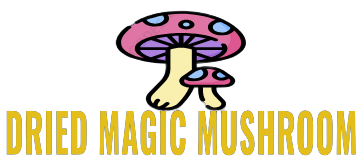
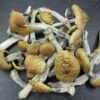
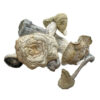

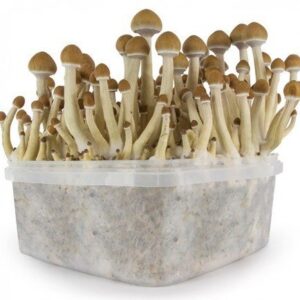
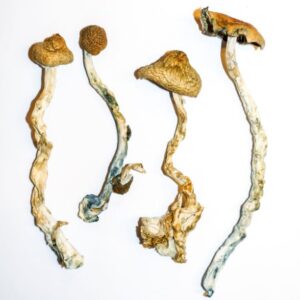

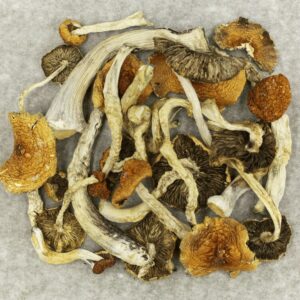
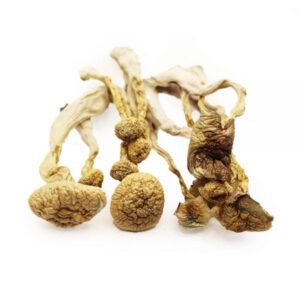

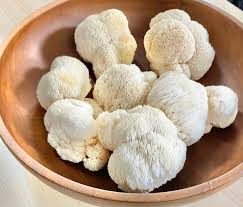
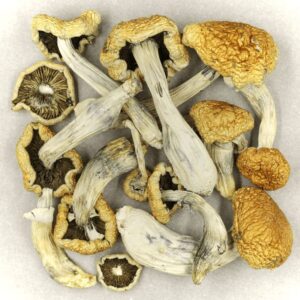
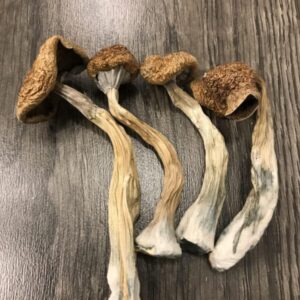
Reviews
There are no reviews yet.